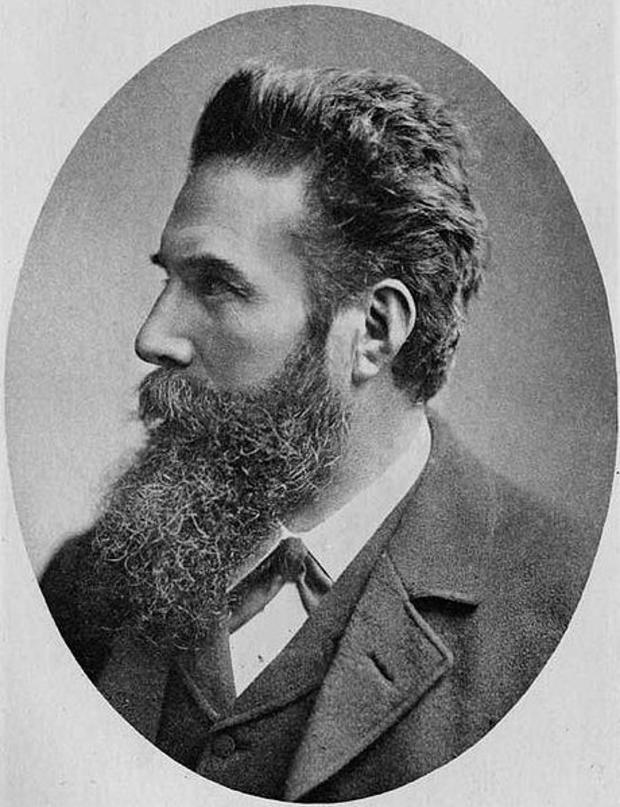The X-Ray's Inventor Gets a Google Doodle
In case you were puzzled by the odd doodle on Google's home page today, it all traces back to 1895. It was on this day that a German physicist named Wilhelm Conrad Rontgen became the first person to observe X-rays.
The best part of the story is that it was an accidental discovery.
Rontgen was actually studying electric currents and how they passed through gas at very low pressures. The Nobel Committee, which awarded him the prize for physics in 1901, noted
"On the evening of November 8, 1895, (Rontgen) found that, if the discharge tube is enclosed in a sealed, thick black carton to exclude all light, and if he worked in a dark room, a paper plate covered on one side with barium platinocyanide placed in the path of the rays became fluorescent even when it was as far as two metres from the discharge tube.""During subsequent experiments he found that objects of different thicknesses interposed in the path of the rays showed variable transparency to them when recorded on a photographic plate. When he immobilised for some moments the hand of his wife in the path of the rays over a photographic plate, he observed after development of the plate an image of his wife's hand which showed the shadows thrown by the bones of her hand and that of a ring she was wearing, surrounded by the penumbra of the flesh, which was more permeable to the rays and therefore threw a fainter shadow. This was the first "rontgenogram" ever taken. In further experiments, Rontgen showed that the new rays are produced by the impact of cathode rays on a material object."
The practical side of his discovery came when Roentgen made an X-ray image of his wife Bertha's s hand. The resulting picture displayed the bones of her hand - including her prominent wedding ring.
